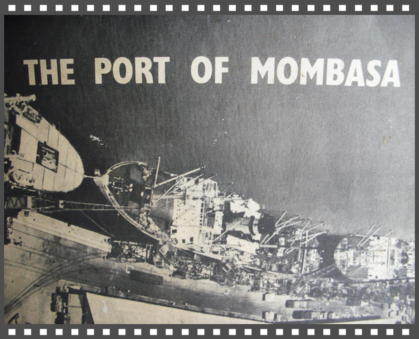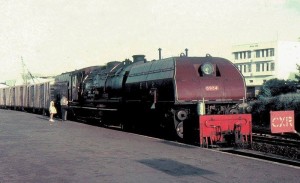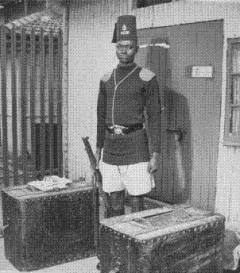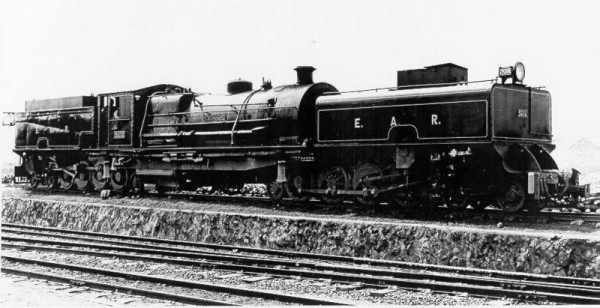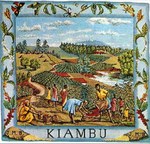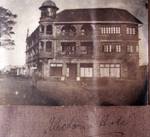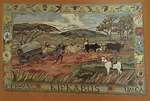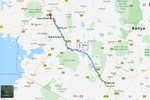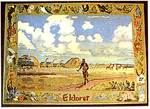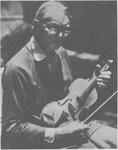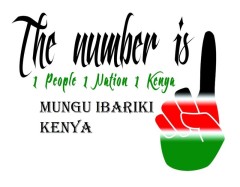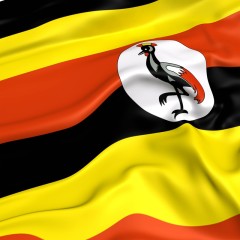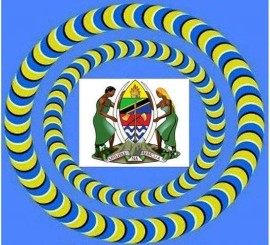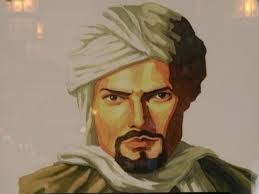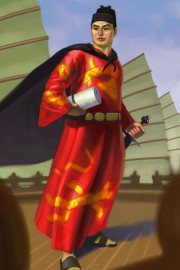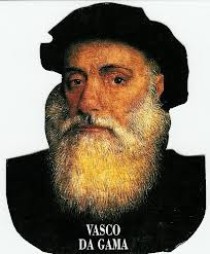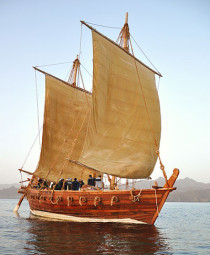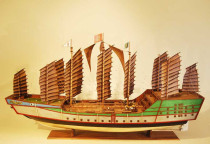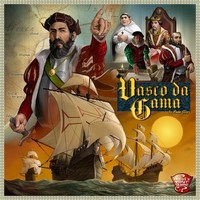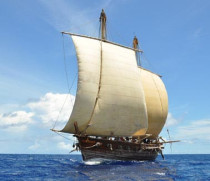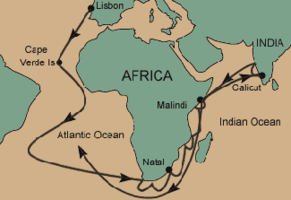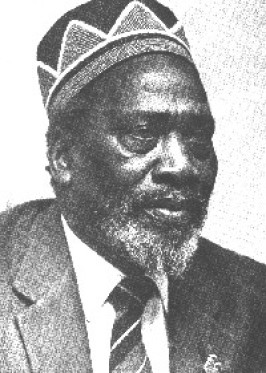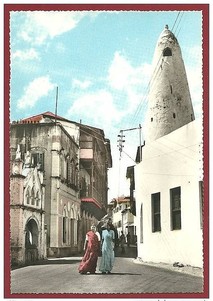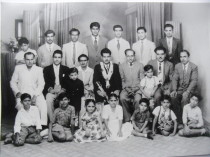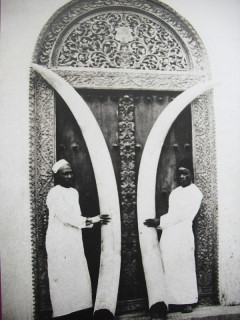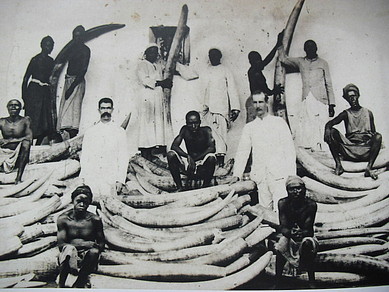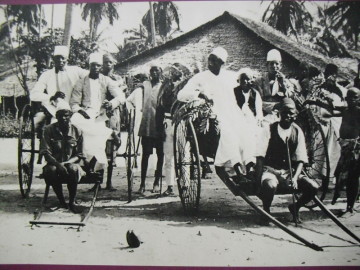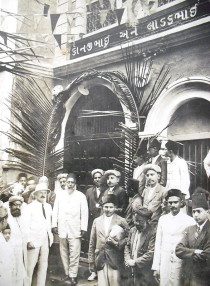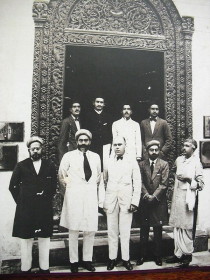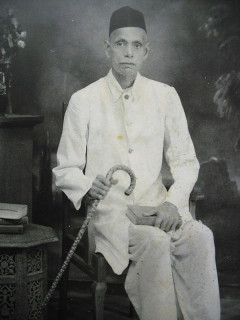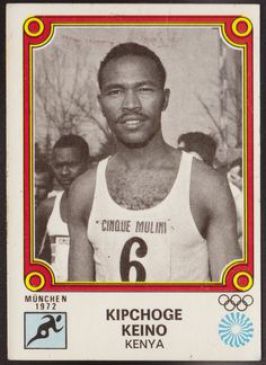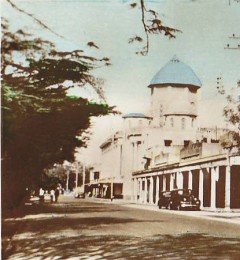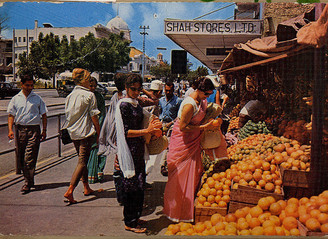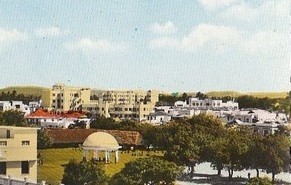East African Railways C.M.E's Workshop
IT is often said that a great deal of Kenya’s history has centred on the Railways. It might be equally true to say that a great deal of the history of the Railway must centre around its Mechanical Engineering Workshops.
The first workshops were established at Kilindini in 1895 by Mr. (later Sir) George Whitehouse the engineer who built the original Uganda Railway.
When railhead reached Nairobi in 1899 the first building of the permanent workshops was completed to house the boiler and erecting shops for steam locomotive repairs. With a floor area of some 7,690 sq. ft. it is still in use as the main machine shop.
Today, the Chief Mechanical Engineer’s Workshops occupy over 50 acres of land with 650,000 sq. ft. of buildings, comprising a foundry, smithy, sawmill, machine shop, boiler shop, steam locomotive erecting shop, diesel locomotive heavy repair shop and various other shops covering such diverse activities as welding, 'painting, carriage and wagon work, joinery and so on.
Locomotives have to be given general repairs every two to three years, coaches must be repaired every two years and wagons every four years. This means that general repairs are carried out to 100 steam, locomotive units, SO diesel locomotives, 500 units of coaching stock and 3,900 wagon units each year.
In addition, the workshops also manufacture very large quantities of spares for running maintenance, which is carried out at depots throughout Kenya and Uganda, and spare parts for mechanical machinery in itse over the entire system. The value of orders for spares placed by the E.A.R. Chief Supplies Officer amounts to over £250,000 per annum.
To cope with all these commitments, a staff of some 2,800 is employed. The annual wage bill is over £600,000.
East African Railways & Harbours Images
From the days of dhows to containerisation
THE PORT OF MOMBASA can trace its history back many centuries to a time when dhows called at the Old Port on the north side of Mombasa Island.
The Old Port is next to Fort Jesus,which was built by the Portuguese navigator Vasco da Gama. This was during the famous spice trade between the Arabian Gulf,the east coast of Africa,the Indian subcontinent and the Far East when navigators were looking for a new route to the Far East.
In the 18th and 19th centuries East Africa was colonised by
various nations including Great Britain and Germany. In the 1890s the region was partitioned,with Tanzania coming under German control and Kenya and Uganda being controlled by Britain.
Trade began to boom and in 1895 work began on a railway from Mombasa to Kampala in Uganda to open up the hinterland for coffee,tea,ivory and skins. As trade expanded and the interior of East Africa
was opened up by the new railway,so demand grew for a fully fledged seaport with a spacious deepwater harbour. A new jetty was needed to handle larger ships bringing construction materials for the
new railway.
As a result,a new port was created at Kilindini Harbour in 1896 with the building of a jetty at Kilindini on the west side of the island which was used mainly for transferring goods between seagoing vessels and the Kenya to Uganda railway. Later,three more jetties were built to handle railborne goods and other import and export traffic.
Cont:
DYING BREED OF EARLY EAST AFRICAN TRADERS
By Edward Rodwell, reported in July 1975
Over the last decade we have watched the East African colonial merchant princes fold their tents quietly and go. Before they did so many merged and kept an identity. Those which dealt in coffee and merchandise were mostly washed away in the rising tide of independence. Those that remain find the going difficult as agency after agency is passed to African distributors.
By this time British India required an agent to act on its behalf with exporters and importers alike and its first choice, unfortunately turned out to be an unsavoury character, one Captain H.A. Fraser, late of the Indian Navy. Archibald Smith from the company's Glasgow office and E.N. Mackenzie from its headquarters in Calcutta, later to be known as Smith, Mackenzie & Co., Ltd in 1877, very soon replaced him and their first office in Zanzibar was situated on a shamba previously purchased from Fraser.
One of the last companies to succumb to national aspirations is what used to be known as Smith Mackenzie and Company (the “Ltd”, was added in 1936). Of late the greater part of the shareholding has been secured by a local consortium.
In one way it is a pity that the Company could not have kept its identity in the hands of those who have guided its destinies for the past 98 years. In 1977 the company would have celebrated its centenary. Under the masthead of Mackenzie (Kenya) Ltd. the celebration may still be honoured.
When I first came to Kenya Smith Mackenzie and Co. was an empire that stretched from the Coast to the Lake. With headquarters at Mombasa the company had offices and agencies throughout Zanzibar, Kenya, Uganda and Tanzania. These were the days when all the Uganda and much of the Tanzania buying and selling as well as imports and exports were handled by Mombasa companies of which Smith Mackenzie was the most influential.
Smith macs knew the country from Mombasa to the Lake because it was their foot caravans that travelled the road before the Uganda Railway was built. It was the Company’s porters who carried the s.s William Mackinnon in broken-down headloads from Mombasa to Port Victoria, fighting their way through the Nandi country. The company also contracted to supply food and trade goods to Imperial J British East Africa Company’s staging posts along the same road.
But ten years before this time in 1886, Smith Mackenzie and Company were commissioned to act as agents to H.M. Stanley in connection with the Emin Pasha Relief Expedition. The company recruited and fitted out 620 Zanzibari porters who with Stanley sailed in the B.I. ship Madura, the destination being Matadi near the mouth of the Congo River. From here the caravan was to march to the Equatorial Province of Egypt, relieve Emin Pasha and complete the crossing of Africa from West to East by marching on to Bagamoyo in Tanzania. The ledger showing the roster of porters still remains in the Company archives.
Usually at the end of a safari of any length leaders and porters take a noggin or two. Emin Pasha must have taken two. He fell from the bedroom window of a house at Bagamoyo and almost broke his neck. A man who witnessed this feat was a partner of J Smith Mackenzie and Company. His granddaughter, Mrs. Desmond Cockell (nee Nicol) lives in Nairobi, married to a Smith Mackenzie executive.
But how did Mr. Smith meet Mr. Mackenzie? In 1872 Sultan Barghash of Zanzibar was anxious to develop the trade of his dominions, which included the Zanzibar islands and mainland to the Lake. The Sultan approached the British India Steamship Co. and encouraged the shipping line to start a regular service from Bombay to Zanzibar with transhipment facilities at Aden. The B.I. commissioned a Capt. H.A.Frazer as their first agent; together with an assistant named Archibald Smith. Two years later Frazer died. In 1875, just a century ago Mr.E.N.Mackenzie arrived at Zanzibar from Mackinnon Mackenzie of Calcutta. Smith and Mackenzie joined forces.
It was now evident that the East African coast would become of commercial and political importance following the spate of explorers who had probed.
Historical information….
http://www.benjidog.co.uk/recollections/Richard%20Crow7.html
Smith Mackenzie
http://skudders.weebly.com/derek-ernest-skudder.html
Click on Photo
The Lunatic Line
The cache is hidden at the National Railway Museum in Nairobi, established in 1971 by the then East African Railways and Harbours Corporation to preserve and display relics and records of the railways of East Africa from their inception to the present day. As well as a collection of a dozen steam and diesel locomotives and rolling stock quietly rusting away in the adjacent sidings, there is a fascinating large display of smaller exhibits, photos and models. Museum opening times are 0845-1700 daily, including most Public Holidays. A small admission fee is charged. See here for more information on the museum, the railway and associated books & films and links to some great Kenya steam photo sites.
http://www.geocaching.com/geocache/GC4M589_the-lunatic-line
The Lunatic Express – A photo essay on the Uganda railway.
http://www.theeagora.com/the-lunatic-express-a-photo-essay-on-the-uganda-railway/
THE KENYA RAILWAYS POLICE
Kenya Police Vision
To be a world class Police Service, with people friendly, responsive and professional workforce.
Kenya Police Mission
To provide quality service to meet the expectation of our esteemed customers; by upholding the rule of law, creating and maintain strong community partnership for
conducive social, economic and political development of Kenya
History of the Formation.
Britain having managed to colonize India and Egypt thus control of the Suez Canal, they wanted to know the source of river Nile. They embarked on an expedition
that landed them to the great Lake Victoria that was hidden far away in East Africa Uganda that was discovered by Henry Morton Stanley in 1875. Cont: http://www.kenyapolice.go.ke/kenya%20railway%20police%20unit.asp
THE HISTORY OF THE KENYA POLICE WITH A FOCUS ON MOMBASA
The History of the Kenya Police 1885- 1960
http://www.academia.edu/4406247/History_of_the_Police_in_Kenya_1885-1960
More Historic Images:
Old Cambrian Society
Introduction
In 2006, Martin Langley (Nicholson, 1956-61) and I were shunting an idea back and forth for a new feature article on the Old Cambrian Website. It had to do with the Garratt steam locomotive and our memories, good and bad, of riding the school trains that it hauled. I first saw a Garratt in the late 1940s when the old railway alignment still ran close to the Kabete Technical and Trades School where my father taught.
Train ride from Mombasa to Nairobi and all the memories to go with it…
East African Railways and Harbours/ East African Railways Corporation, Amazing historical events in images created/captured by Malcolm McCrow
Main Line
Journey: Mombasa-Kampala
http://www.mccrow.org.uk/eastafrica/EastAfricanRailways/EAR_GeoffPollard.htm
Map
East African Railways & Harbours - Kampala to Mombasa:http://www.mccrow.org.uk/eastafrica/EastAfricanRailways/EARMaps/KLA_MSA.htm
Journey: Nairobi-Kampala: http://www.mccrow.org.uk/eastafrica/EastAfricanRailways/KampalaNairobi.htm
Map:East African Railways & Harbours - Kasese to Nairobihttp://www.mccrow.org.uk/eastafrica/EastAfricanRailways/EARMaps/KSE_NRB.htm
Journey: Mombasa-Nairobi-Mombasa: http://www.mccrow.org.uk/eastafrica/EastAfricanRailways/NairobiMombasa.htm
Time Table: Mombasa-Nairobi-Mombasa: http://www.mccrow.org.uk/eastafrica/EastAfricanRailways/EARMaps/TT_MBA_NRB.htm
Time Table: Nairobi-Eldoret
http://www.mccrow.org.uk/eastafrica/EastAfricanRailways/EARMaps/TT_NRB_ELD.htm
Timetable: Eldoret-Kampala
http://www.mccrow.org.uk/eastafrica/EastAfricanRailways/EARMaps/TT_ELD_KLA.htm
Time Table: Kampala-Kasese
http://www.mccrow.org.uk/eastafrica/EastAfricanRailways/EARMaps/TT_KLA_KSE.htm
Journey in Images
Nairobi-Kisumu-Butere:
http://www.mccrow.org.uk/eastafrica/EastAfricanRailways/NairobiKisumu.htm
Nairobi to Nanyuki: http://www.mccrow.org.uk/eastafrica/EastAfricanRailways/NairobiNanyuki.htm
Gilgil to Thomson Falls: http://www.mccrow.org.uk/eastafrica/EastAfricanRailways/EARIainMulligan/MulliganGilgil.htm
Voi to Moshi: http://www.mccrow.org.uk/eastafrica/EastAfricanRailways/EARRobertWBridger/RWBridger1971.htm
East African Railways & Harbours
Station and Port 3 Letter Codes:
http://www.mccrow.org.uk/eastafrica/EastAfricanRailways/EARMaps/StationCodes.htm
Specimen Fares:
http://www.mccrow.org.uk/eastafrica/EastAfricanRailways/EARMaps/SpecimenFares.htm
East African Railways and Harbours, Marine Services:
http://www.mccrow.org.uk/eastafrica/EastAfricanRailways/MarineDivision/EARLakes.htm
Past and Present on Lake Victoria and Lake Albert
http://www.mccrow.org.uk/eastafrica/EastAfricanRailways/Maritime_Jerry%20Burley.htm
Kisumu to
Kisumu (Marine Services):
http://www.mccrow.org.uk/eastafrica/EastAfricanRailways/EARMaps/TT_KSU_KSU.htm
Inland Marine Services
http://www.mccrow.org.uk/eastafrica/EastAfricanRailways/EARAlanThompson/LakeSteamers.htm
Mbulamuti for Namasagali - Congo, Sudan and Egypt http://www.mccrow.org.uk/eastafrica/EastAfricanRailways/Mbulamuti_Laropi.htm
East African Railways and Harbours, Marine Division:
http://www.mccrow.org.uk/eastafrica/EastAfricanRailways/MarineDivision/EARSafari47.htm
http://www.mccrow.org.uk/eastafrica/EastAfricanRailways/MarineDivision/EAROcean.htm
http://www.mccrow.org.uk/eastafrica/EastAfricanRailways/DeathOfFleet.htm
Steam Sheds and Depots, Nairobi, Kenya
http://www.mccrow.org.uk/eastafrica/EastAfricanRailways/EARIainMulligan/IainMulliganEAR.htm
http://www.mccrow.org.uk/eastafrica/EastAfricanRailways/NairobiMPD.htm
East African Railways and Harbours,Mombasa and Voi MPDs
http://www.mccrow.org.uk/eastafrica/EastAfricanRailways/EARKevinPatience/PatienceMombasaMPD.htm
Uganda Branches
East African Railways and Harbours Western Extension http://www.mccrow.org.uk/eastafrica/EastAfricanRailways/UgandaBranches.htm
The Western
Extension and Other Locations
http://www.mccrow.org.uk/eastafrica/EastAfricanRailways/WesternExtension.htm
Kenya & Uganda, Jinja Bridge: http://www.mccrow.org.uk/eastafrica/EastAfricanRailways/KURJinjaBridge.htm
Uganda Railways Kampala to Tororo
http://www.mccrow.org.uk/eastafrica/EastAfricanRailways/EARIainMulligan/UgandaRailways2004.htm
Tanganyika Main Line, Tanganyika & Kenya
http://www.mccrow.org.uk/eastafrica/EastAfricanRailways/EARAlanThompson/Trains.htm
Kenya Railways Preserved Steam 2001-2005
http://www.mccrow.org.uk/eastafrica/EastAfricanRailways/KenyaPreservedSteam2005.htm
Kenya Railways Diesel locomotiveshttp://www.mccrow.org.uk/eastafrica/EastAfricanRailways/KRDiesels.htm
Kenya Railways, Nairobi to Nanyuki 2004
http://www.mccrow.org.uk/eastafrica/EastAfricanRailways/EARIainMulligan/KenyaRailways2004.htm
Kenya Uganda Railways & Harbours, A rare Historic series of photographs taken in the 1930s and 40s
http://www.mccrow.org.uk/eastafrica/EastAfricanRailways/KURandH.htm
In 1910 Sir John Kirk remarked on the work of Indian Traders in Nairobi:
In fact drive away the Indians and you may as well shut up the Protectorate. It is only by means of the Indian Trader that articles of European use can be obtained at moderate prices.
Winston Churchill in “My African Journey”: It is by Indian labour that the one vital railway on which everything else depends was constructed.
EAST AFRICANRAILWAYS & HARBOURSSTAFF MAGAZINES
AND SPEAR
June 1952 to December 1969
(all in PDF format)
“It is not uncommon for a country to create a railway, but it is uncommon for a railway to create a country.”
—Sir Charles Eliot, Commissioner of British East Africa in 1900-1904
http://www.energeticproductions.com/EARandH/index.htm
http://mccrow.org.uk/EastAfrica/EastAfricanRailways/indexEAR.htm
TRANS NZOIA: THE MITFORD BARBERTON FAMILY
What was it like in January 1914 and what was the Journey like from the farm called “Ivanhoe” in the cart with the wagon heavily loaded to Mt Elgon area. I have added a road map to give a rough idea to the readers but by no means was the same route applied to this journey.
The Mitford Barbertons emigrated to Kenya before the First World War and acquired a coffee farm called ‘Ivanhoe’ in Kiambu(north of Nairobi approx. 10 miles). They also bought land in the Trans Nzoia under Mount Elgon.
Of their children Ivan returned to South Africa after the war and became a well- known sculptor; Raymond is still living in Australia at the time of writing; Renshaw, an authority on the Elgon caves, farmed in the Kitale area, as did Alban, nicknamed Pog, who died in 1983-
The following extracts are from the diary of the boys’ mother, Mary Layard Mitford Barberton (nee Bowker)—Hal is her
husband:
Trip to the Elgon farms, January 1914
Friday 9th. 10 mile journey to Nairobi, left ‘Ivanhoe’ in the cart with the wagon heavily loaded, reached Nairobi at nightfall, slept at Victoria Hotel.
Saturday 10th. Approximately 144 mile journey to Londiani…Left Nairobi the next day at 12 for Londiani which we reached early the next morning. There we stayed two days and left Tuesday morning with 4 wagons all full of our household stuff, a tremendous trek, the biggest that has gone out in this direction. We are 9 days passing through lovely cedar and bamboo forest, the road a fine one made by native labour and took three years to make the Mackinnon-Sclater road was a 970 km (600 mi) ox cart Mombasa Busia Kenya British East Africa Company.
After passing through the approx. 47miles from Londiani to Burnt Forest, a weird stretch of blackened cedar many square miles in extent, we reached the Plateau. We visited the saw mills and saw a lot of cut timber and loaded up a lot for the house. The wood is wonderfully seasoned and makes good furniture. Here we saw the horns of the ram and ewe Bongo bushbuck, very big and handsome. The plateau is bleak and dry this time of year, and
the whole aspect dreary with the smoke of veld fires, wind and dust all day—and cold nights. Plenty of game, kongoni and oribi. We shot one or two for food. Water scarce but in the rainy season it is terribly wet and wagons take 20 days travelling from Londiani to Eldoret through Kipkabus area.
Two days of bare veld travelling and we went down and down and found Eldoret (called 64 earlier), the beginning of a town in a windy open valley with the Eldoret river (small) in the '. alley and crossed by a rough bridge. Stony and dusty and dry, wood and iron shops, the streets are being planted with trees. We slept there, horribly uncomfortable, cold and exposed. Luckily Mr Smith took us all off to the hotel for supper, there we had breakfast too, and that saved time and trouble. We bought £70 worth of stuff we had forgotten and trekked on to Smith’s farm 14 miles, reaching it at 9 at night, after sticking dreadfully in a rocky drift in a den of lions where they are known to be as thick as thieves and where in the pitch dark we stuck in a hopeless sea of mud and water. ‘All hands to the pumps’, which means everyone hauling and belabouring the oxen. Through the drift a steep rocky bit kept us yelling and hammering and putting stones under the wheels as they kept slipping back. Out of this, and thanking our stars in the darkness for a smooth road and safety. Then we found that a blind ox had been left at the drift and the man who drove a few spare cattle had to have a lamp and go back.
Mr Lovemore, Smith’s partner, was in bed as he had no candles and no oil and no tea! He came and showed us where to outspan and we were all safely in bed, some in the house, Hal near the wagon and Mary, Pog and I in the wagon. We spent Sunday there, leaving late in the afternoon and camping near Birdsey’s, two miles off. Pog and I went to bed and the others spent the evening at Birdsey’s. The Sergoit River was just below us. We went away from that camp late on Sunday afternoon and slept in the next little creek.
Crossed the Nzoia River some 36 miles from Eldoret, a wide stream, late the next evening, after spending 3 hours at Wesell’s farm, kind people. A dreadful crossing, we expected the wagons each to upset, the bank was so steep and crooked. The yelling and splashing, oxen swimming and whips and sticks resounding was terrific. We went over in the first wagon in full expectation of being upset and eaten by crocodiles; however, immortality was not accorded to us. We stuck on the opposite bank and an extra span pulled us out, 32 oxen on our wagon, quite a sight. And so all four wagons were taken over in safety and Ivan brought the cart and mules through; a Nandi shed a yard of Amerikani and two spears and carried over the calf and then drove over all spare cattle, who swam a deep place and all stuck under a high bank and had to be whacked and coaxed into shallow water.
The next day we trekked early through country covered with curious broadleaved trees, mostly protea, saw a handsome mauve orchid and a yellow one with dull red centre and many small pretty flowers in the burnt parts, saw the red snapdragon. I rode in the can with Ivan as I was sick. Saw a fine waterbuck, Hal, Kidson and Bobs in pursuit, no result. We crossed the Rongai River, a swift, rocky stream, lovely water but j an awful drift—a staircase of sheer slanting rock for the poor oxen to go up; fearful ‘ slidings and flopping down on knees, but, the river god being dead, they had to put their necks to it and fall back on strength and determination.
We had lunch here and a bathe and saw the tails of marabou storks hanging to dry at a place just over the river belonging to a young man named Taylor. Hal wrote a short note saying who we were and where bound and left it with his Kavirondo servant. That night we slept near a patch of bush where lions live in plenty. We laid up the team, lighted the lamps and went to sleep undisturbed till morning. From here we could see our farm over the plain on the slopes of the mountain and the precipices where the big caves are. A few miles and we were on our home farm. Finally we drew up under the big fig tree on the Mumias road, loaded off the wagons and slept there...

























